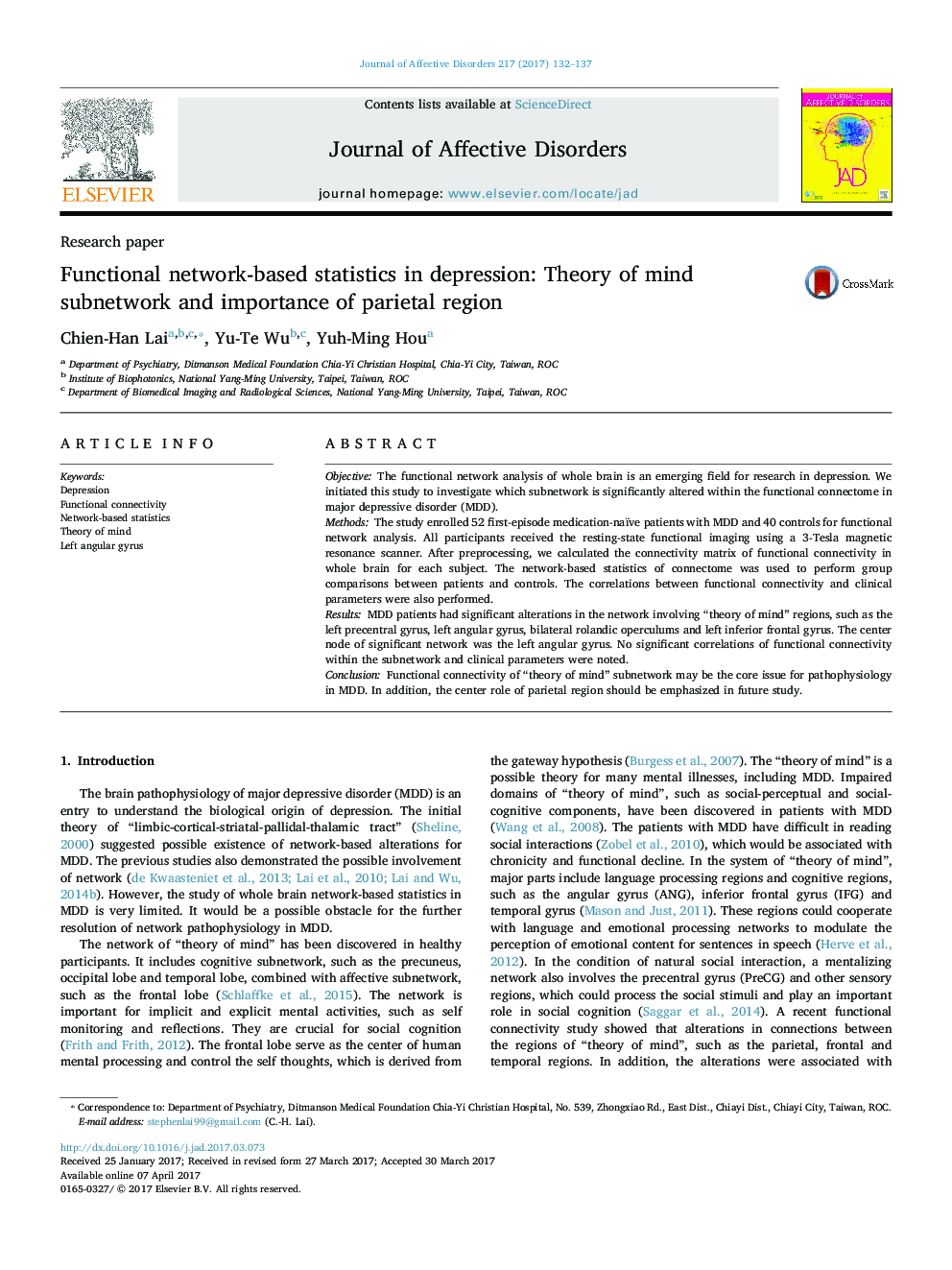| Article ID | Journal | Published Year | Pages | File Type |
|---|---|---|---|---|
| 5722192 | Journal of Affective Disorders | 2017 | 6 Pages |
â¢In addition to traditional theory for depression, “theory of mind” could be proved in current connectome analysis.â¢In the subnetwork, the core node is the left angular gyrus.â¢The connecting spots with the core node include the left precentral gyrus, left angular gyrus, bilateral rolandic operculums and left inferior frontal gyrus.
ObjectiveThe functional network analysis of whole brain is an emerging field for research in depression. We initiated this study to investigate which subnetwork is significantly altered within the functional connectome in major depressive disorder (MDD).MethodsThe study enrolled 52 first-episode medication-naïve patients with MDD and 40 controls for functional network analysis. All participants received the resting-state functional imaging using a 3-Tesla magnetic resonance scanner. After preprocessing, we calculated the connectivity matrix of functional connectivity in whole brain for each subject. The network-based statistics of connectome was used to perform group comparisons between patients and controls. The correlations between functional connectivity and clinical parameters were also performed.ResultsMDD patients had significant alterations in the network involving “theory of mind” regions, such as the left precentral gyrus, left angular gyrus, bilateral rolandic operculums and left inferior frontal gyrus. The center node of significant network was the left angular gyrus. No significant correlations of functional connectivity within the subnetwork and clinical parameters were noted.ConclusionFunctional connectivity of “theory of mind” subnetwork may be the core issue for pathophysiology in MDD. In addition, the center role of parietal region should be emphasized in future study.
